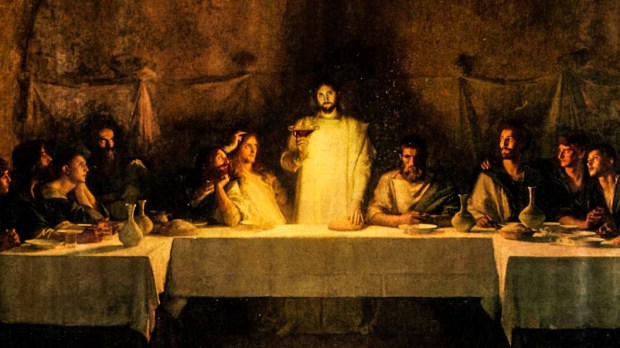A recent investigation into Palestinian cuisine in Jesus’ time claims that, in addition to unleavened bread and wine, the Last Supper also included beans stew, lamb meat, olives, bitter herbs, fish sauce and tamaras – that is, dates.
Generoso Urciuoli, an archaeologist of the Petri Center, in Italy, and Marta Berogno, archaeologist and Egyptologist at the Egyptian Museum in Turin, are responsible for this research, which will be published next month in a book entitled Gerusalemme: L’Última Cena(Jerusalem, the Last Supper).
The material collected by the researchers was sufficient for archaeologists to find information about eating habits in Jerusalem at the beginning of the 1st century. For instance, they confirmed that the Last Supper was not served on a rectangular table (as shown in most religious art), but rather Jesus and his apostles sat on cushions on the floor, following the Roman custom. “At that time, in Palestine, the food was placed on low tables and the guests ate sitting on cushions on the floor and resting carpets,” Urciuoli said.
And of course, instead of lining up on one side of a table, Jesus and the apostles were most likely seated following the precise rules of etiquette at the time, in which the most important guests sat to the right or left of the main guest. “The Gospel of John indicates Judas was very close to Jesus, probably sitting to his left. In fact, we are told that Judas dipped his bread in Jesus’ plate, following the practice of sharing food from a common dish,” says Urciuoli.
In order to discover the menu served at the Last Supper, they used biblical passages including the Feast of Tabernacles, the wedding of Cana (where Jesus turned water into wine), and Herod’s banquet (when John the Baptist’s head was requested). “The passage of the Wedding of Cana allowed us to understand Jewish dietary laws (that is, the kashrut), which establishes what foods can and cannot be eaten and how they should be prepared. On the other hand, the feast of Herod allowed us to analyze Roman culinary influences in Jerusalem,” said the archaeologist.
The studies reveal that beyond unleavened bread and wine, the Last Supper probably included tzir, a variant of garum, a typical Roman fish sauce; lamb meat; cholent, a slow-cooked baked beans stew; olives with hyssop, a mint-flavored herb; bitter herbs with pistachios; date charoset; and, most likely, walnut paste.
“Bitter herbs and charoset are typical Passover dishes, as is the cholent, mostly eaten during the holidays. Hyssop, on the other hand, was consumed daily,” says the researcher.
Article originally published by Primeros Cristianos.

